OrbitalATK
Latest
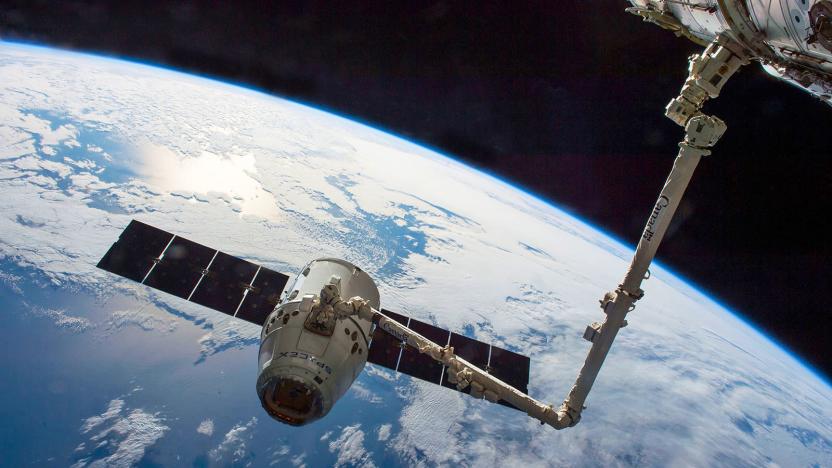
SpaceX price hikes will make ISS cargo missions more costly
NASA said it will pay $400 million more for cargo delivery to the International Space Station (ISS) starting in 2020, thanks in part to a 50 percent price increase from supplier SpaceX. On top of that, the ISS will receive six fewer tons of cargo, so on a cost-per-pound basis, prices will rise by 14 percent for the second phase of commercial resupply (CRS-2) missions between 2020 and 2024. The information comes from a new NASA audit, and reveals new details about the 2016 bidding for CRS-2 missions.
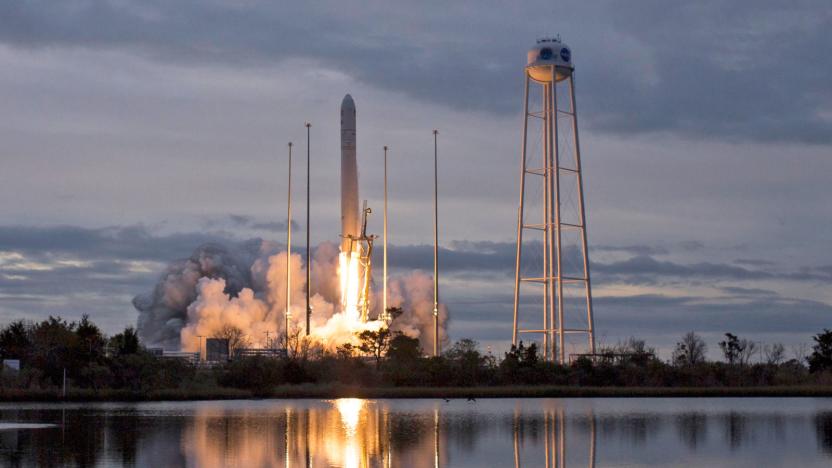
Virtual nation Asgardia has launched itself into space
Last year, Russian scientist Igor Ashurbeyli announced the formation of Asgardia -- a new virtual nation that will ultimately exist entirely in space. Since its debut, Asgardia has attracted over 300,000 registrants, created a constitution and, as of this Sunday, launched itself -- all 0.5 TB of it -- into space.

Orbital ATK's Taurus rocket finally makes it into space
Six and a half years after its last launch ended in failure, private spaceflight company Orbital ATK's Taurus-XL rocket -- now called Minotaur-C -- has made it into space. Since its maiden flight in 1994, the rocket has seen six successful launches and three failures, one of which led to the loss of NASA's Orbiting Carbon Observatory, in 2009. But after a redesign that sees the Minotaur-C reimagined as hybrid of the company's Minotaur, Taurus, and Pegasus rockets, it successfully launched from Vandenberg Air Force Base in California on Tuesday. The rocket is equipped with four solid-fueled rocket stages, stands at 92 feet (28 meters) tall and can deliver payloads of up to 3,500 lbs into orbit.
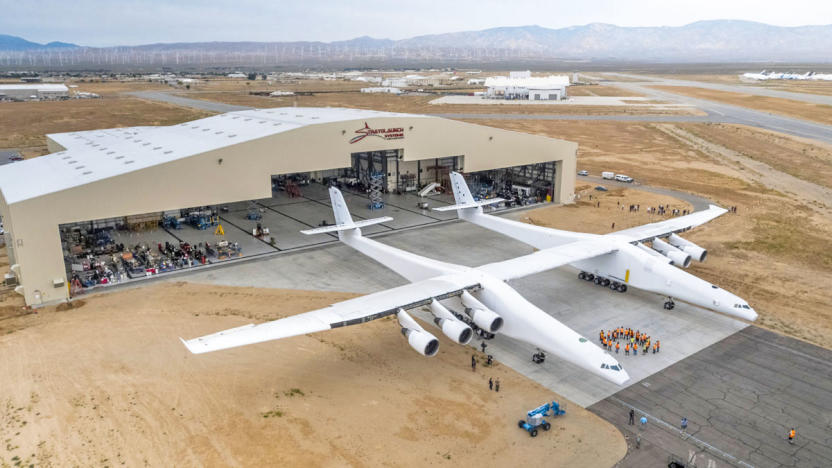
The world’s largest aircraft had a successful engine test
Back in May, we reported that the world's largest aircraft, the Stratolaunch, had finally left its (giant) hanger and was preparing for tests. This week, the first of those was completed. All six of the massive rocket-launching plane's turbofan engines were turned on and tested.
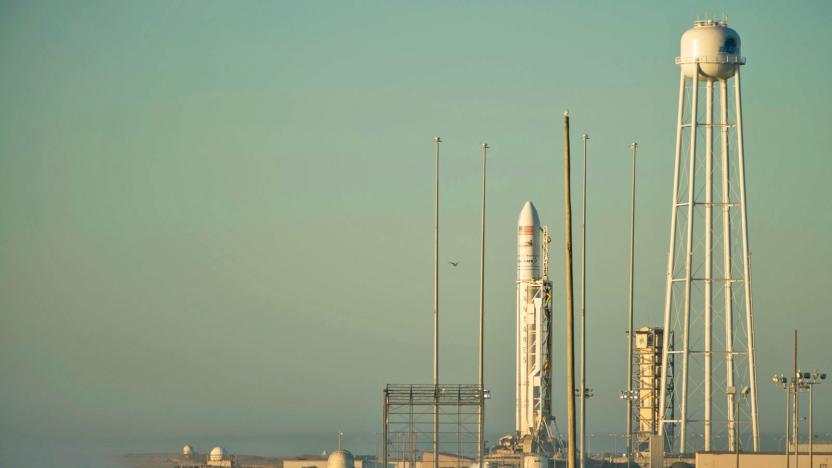
Northrop Grumman joins the space race with $7.8 billion acquisition
Today, Orbital ATK announced that defense contractor Northrop Grumman will acquire it for $7.8 billion in cash, with an additional $1.4 billion in debt. Orbital ATK builds rockets and constructs satellites for both commercial and military applications. The company is also contracted to send resupply missions to the International Space Station with its Cygnus spacecraft and built the boosters for NASA's SLS rocket.
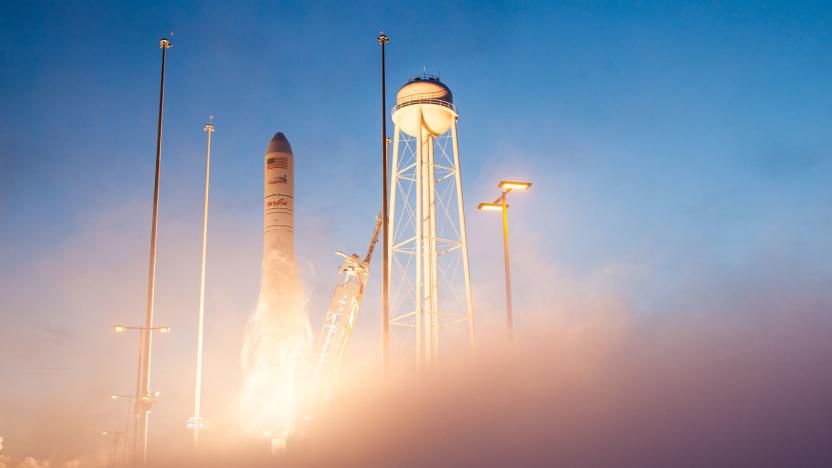
Senate alters sanctions to allow use of Russian rocket engines
Don't look now, but American spaceflight just dodged a bullet. Senators have passed an amendment to an Iran-Russia sanctions bill that, if gone unchecked, would have barred both NASA and private outfits from using Russian rocket engines. The original measure was supposed to prevent purchases from organizations that work with Russian defense and intelligence, but it would have effectively banned imports of the common RD-180 engine (found in ULA's Atlas 5) and RD-181 (used in Orbital ATK's Antares).
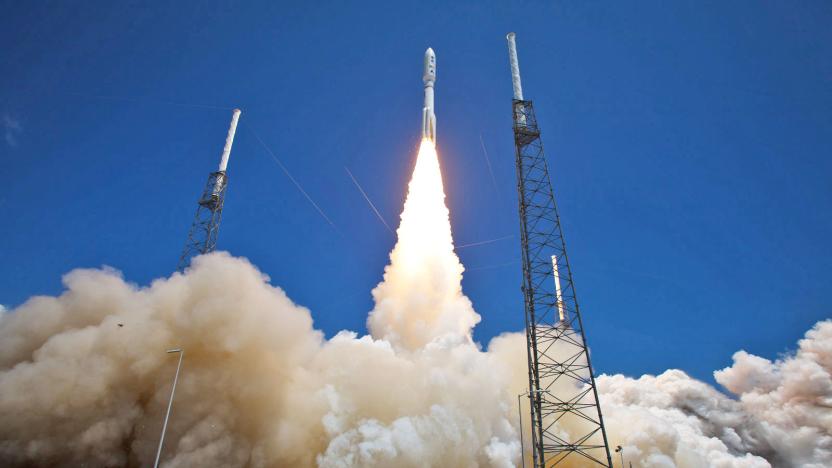
Watch NASA's first 360-degree live stream of a rocket launch
Rocket launch videos are typically captured from afar, putting you in the shoes of a spectator in the crowd. NASA's live coverage of an Orbital Cygnus spacecraft's ISS resupply mission, however, will take you to the launch pad itself. For the first time ever, the agency will broadcast a live 360-degree video of a rocket launch on the NASATelevision YouTube channel tomorrow, April 18th.

Watch NASA's third attempt at launching CYGNSS to space
NASA had to scrub its second attempt to launch eight weather microsatellites to space yet again. Its new target launch date? Today, December 15th, at 8:26AM Eastern time. The agency's Cyclone Global Navigation Satellite System (CYGNSS) mission was supposed to leave our planet on December 12th and then again on December 14th. Unfortunately, the first one had to be delayed due to a problem with the hydraulic pump the controls the release of Orbital ATK's Pegasus rocket from its modified aircraft carrier. See, unlike typical rockets that lift off from the ground, Pegasus was designed to be dropped from an airplane. The second attempt, on the other hand, had to be scrapped due to an issue with the flight data used by the spacecraft's software.
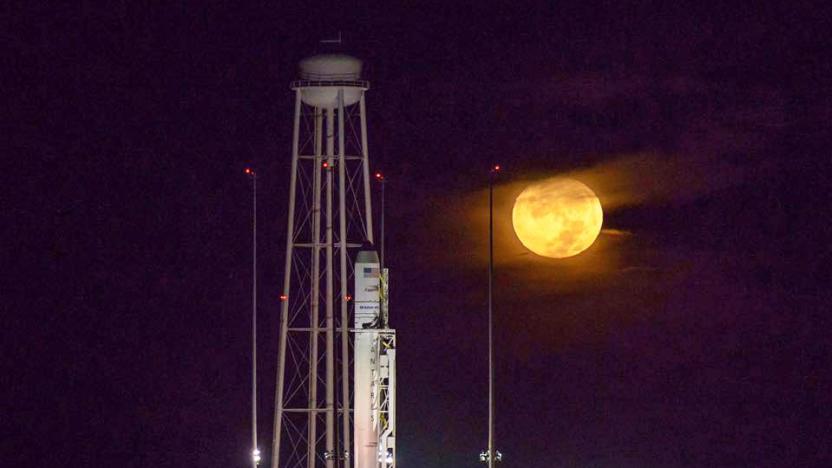
Watch Orbital's Antares rocket fly for the first time in 2 years
Orbital ATK's new and improved Antares rocket is ready for lift off two years after the company's unfortunate accident. Back in 2014, its older version blew up merely six seconds after launch, taking the space station's supplies with it. Since then, the aerospace corporation has been resupplying the ISS by sending its Cygnus spacecraft to orbit aboard United Launch Alliance's Atlas V. Well, that partnership is over. The brand new rocket is already at NASA's Wallops facility in Virginia and is scheduled for launch on October 16th at 8:03 PM Eastern time.

NASA will build full-scale deep space habitats on Earth
NASA is already preparing for humanity's journey into the great unknown, and part of its efforts is developing a suitable habitat for future spacefarers. In order to create a place where people can live outside our own planet, the agency has teamed up with six private corporations to build full-scale ground prototypes of the habitats they designed. NASA has chosen those six out of all the proposals it got for the second Next Space Technologies for Exploration Partnerships. And as you can see above, Boeing is one of them.

NASA built an HDR camera to film rocket tests
We enjoy the hell out of static rockets tests, but NASA doesn't do them for the lulz -- they're the crucial last step before a new booster launches. To get better data, the space agency developed a new HDR camera that showed what's going on when the gigantic Space Launch System (SLS) rocket booster fires. Called the "High Dynamic Range Stereo X" (HiDyRS-X), it captured fine detail in the plume, which was "several orders of magnitude" brighter than what researchers had tested before. HDR images are formed by combining multiple exposures, which are often taken one at a time or using multiple cameras. However, the NASA team, made up of young engineers from NASA's Early Career Initiative (ECI), elected to use a single camera without image sequencing. By fitting it with custom chips and pixels, it can capture multiple images with varying exposures all at the same time. That allows it to compensate for the extremely bright plume, while remaining small enough to easily install on a rocket test stand.

Orbital rocket ready to launch its biggest ISS cargo ever
A resupply ship from Orbital ATK is ready to launch its largest cargo ever to the International Space Station. The newly redesigned Cygnus craft, first launched in December, is capable of carrying 25 percent more payload than before, and today's weighs nearly four tons. "It's like opening a box of goodies and finding some stuff you've been wanting and some surprises you didn't know about," says Orbital's Dan Tani, a former ISS astronaut. Along with the supplies, Cygnus will carry a 3D printer from Made in Space, two dozen nanosatellites and Saffire, an experiment to test the effects of fire in space.
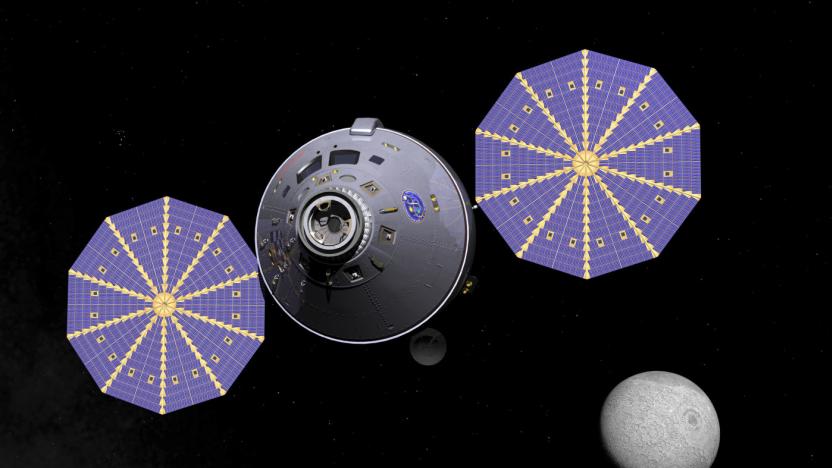
NASA picks solar power candidates for deep space missions
NASA is going to need solar power if it wants to keep its future deep space missions running, and that means getting someone to build that light-gathering technology. Fortunately, the agency has some partners lined up. It just picked four solar power technology proposals that could find their way into spacecraft traveling as far as Mars. The outfits negotiating deals are definitely ones you'll know -- ATK, Boeing, Johns Hopkins University and NASA's own Jet Propulsion Laboratory are all developing systems that collect solar energy in the unforgiving conditions beyond Earth.

ICYMI: Space junk reboot, biological machine v2 and more
#fivemin-widget-blogsmith-image-763516{display:none;} .cke_show_borders #fivemin-widget-blogsmith-image-763516, #postcontentcontainer #fivemin-widget-blogsmith-image-763516{width:570px;display:block;} try{document.getElementById("fivemin-widget-blogsmith-image-763516").style.display="none";}catch(e){}Today on In Case You Missed It: NASA thinks it can extend the life of even dead satellites orbiting Earth with a new solution from the agency and Orbital ATK. Mission Extension Vehicles should go up in 2018 and give the sats battery power for as long as another 15 years. A game developer is trying to make older, classic Nintendo games 3D with an emulator that uses a custom algorithm to separate flat backgrounds into 3D objects. And the National Science Foundation funded work to create a biological machine that can be controlled with electrical or optical signals-- while using it's own muscle tissue for power. We also wanted to make sure you saw the ostrich chase video that is making the rounds. As always, please share any interesting science or tech videos, anytime! Just tweet us with the #ICYMI hashtag to @mskerryd.
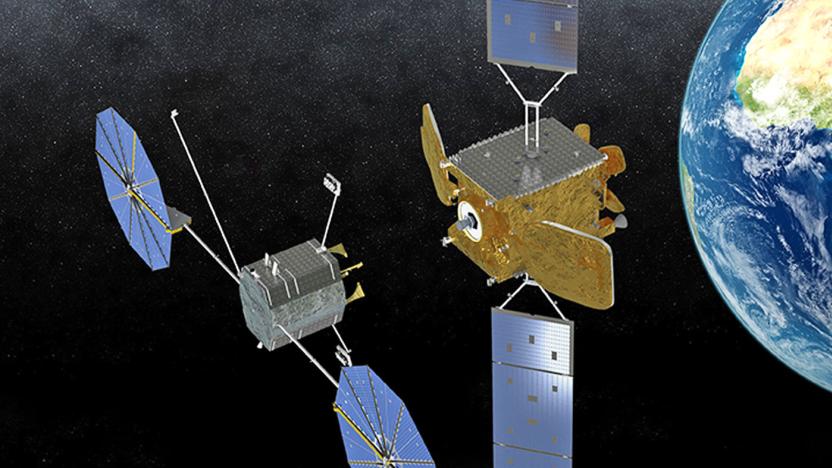
ViviSat has a plan to breathe new life into aging satellites
The wealth of space junk idling around Earth is becoming such a serious problem we've taken to dreaming up supervillain schemes to address it. No one solution has been settled on quite yet, but in the meantime ViviSat -- a joint venture between aerospace firms US Space and Orbital ATK (formerly Orbital Sciences) -- has an idea that should cut down the amount we're adding to the dumpster in the sky. Satellites have a lifespan defined by how much fuel they carry into orbit, but with the help of ViviSat's Mission Extender Vehicle (MEV), they could survive up to 15 years longer than they were originally destined to.

NASA picks three private space companies to resupply the ISS
NASA will fund the International Space Station at least through 2024, so keeping the astronauts on it fed and experimenting is a big deal. That's why the nation's top space agency announced new resupply contracts for Orbital ATK and Elon Musk's SpaceX, two major incumbents that were joined by newcomer Sierra Nevada and its resumable, mini-spaceplane. Each company will get at least six resupply missions, but it's "likely" that NASA will buy more than 18 flights — NASA will grant additional missions based on what they and the station's spacefaring crew need at the time.

US Army will test a smart grenade launcher that hits hidden targets
After years of work, Orbital ATK (born from Orbital Sciences) is close to delivering a clever weapon that could help American soldiers in very tricky situations. As of early 2016, the US Army will start acceptance testing for the XM25, a smart grenade launcher that can defeat enemies behind cover. In normal use, all you have to do is point at an enemy (up to 1,640 feet away) and let the XM25's laser rangefinder decide when your grenade explodes. If a target is hiding, however, you can dial in extra distance (up to 2,300 feet away) and explode the grenade in mid-air. Troops theoretically don't have to expose themselves to line up a shot -- they just pick a close-enough point and pull the trigger.








